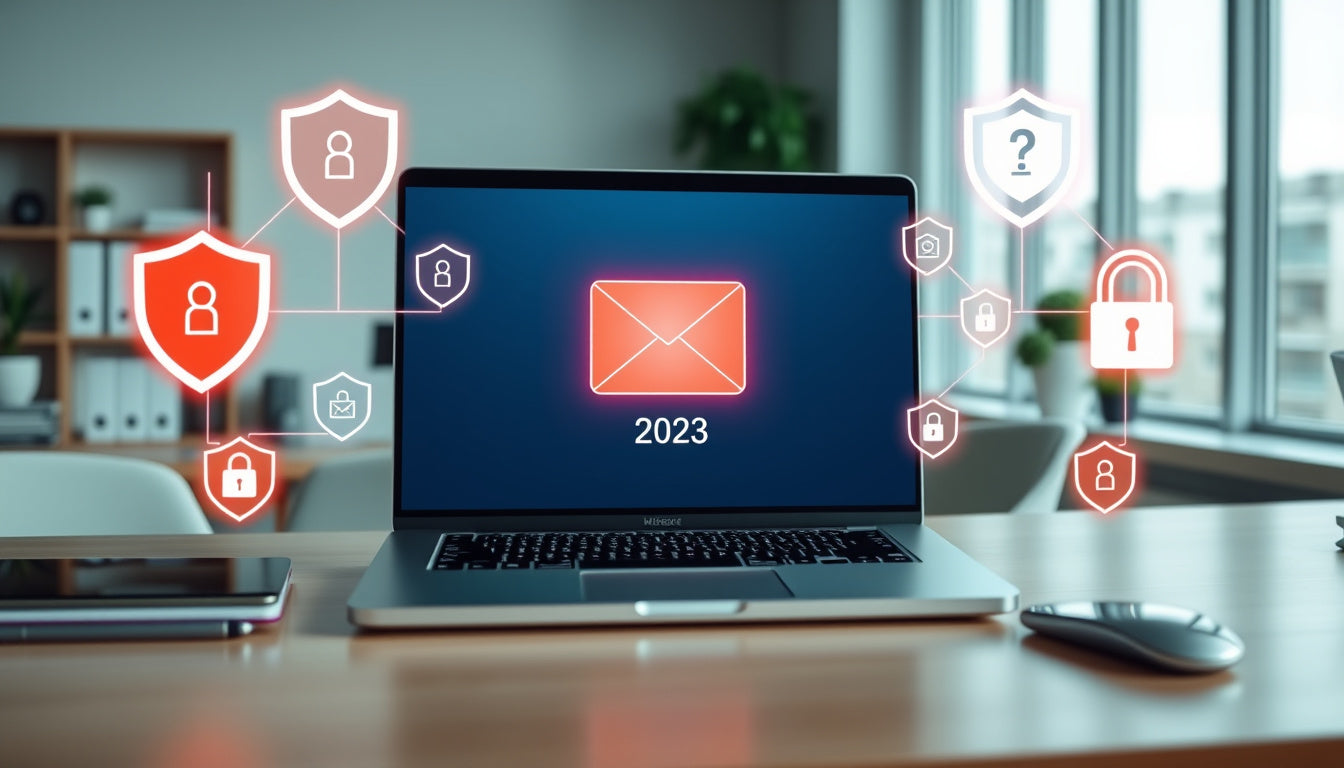Fortify Your Inbox: Essential Strategies for Email Security in 2023
In the digital era, email remains a cornerstone of business communication, enabling swift and efficient exchanges among teams, clients, and partners. However, this reliance on email also makes it a prime target for cybercriminals. With cyber threats evolving rapidly, understanding and implementing robust email security measures is crucial for protecting sensitive information and maintaining organizational integrity. Below, we explore essential strategies for fortifying your inbox in 2023. 
Understanding Email Security
Email security encompasses a range of practices and tools designed to protect email accounts and communications from unauthorized access, data breaches, and various cyber threats. According to current statistics, approximately 94% of cyberattacks begin with malicious emails, highlighting the critical need for comprehensive email security solutions.
Importance of Email Security
The staggering volume of emails exchanged daily—over 333 billion—creates ample opportunities for cybercriminals. These threats can range from business email compromise (BEC), phishing schemes, and malware attacks to sophisticated breaches stemming from human error. The consequences of inadequate email security are severe, often resulting in significant financial losses, data exfiltration, and reputational damage.
Key Benefits of Email Security
Prioritizing email security is not just a precaution; it provides tangible benefits:
- Protection Against Cyber Threats: Effective email security solutions help detect and block malicious content before it reaches the user.
- Enhancement of Operational Efficiency: By reducing the risk of disruptions caused by cyber incidents, companies can maintain consistent productivity.
- Compliance with Regulatory Standards: Adhering to data protection laws (e.g., GDPR) safeguards organizations against legal repercussions and penalties.
Best Practices for Email Security
To safeguard your email environment in 2023, consider the following best practices:
1. Implement Multi-Factor Authentication (MFA)
MFA adds an additional layer of security, requiring users to provide two or more verification methods to access their accounts. This significantly reduces the risk of account takeovers.
2. Conduct Regular Security Awareness Training
Educating employees about email security, phishing identification, and safe email practices is essential. Regular training sessions can empower your team to recognize potential threats effectively.
3. Use Advanced Email Security Solutions
Invest in sophisticated email security platforms that incorporate features like:
- Spam Filters: Automatically block suspicious emails.
- Data Loss Prevention (DLP): Prevent sensitive data from being sent out without authorization.
- Malware Detection: Scan attachments and links for harmful content.
4. Monitor for Impersonation and Account Takeover
Employ tools that can detect unusual access patterns or attempted account takeovers. Monitoring for impersonation attempts helps secure organizational integrity and reputation.
5. Encrypt Sensitive Emails
Utilizing encryption ensures that even if emails are intercepted, they remain unreadable by unauthorized parties. This is especially critical for communications containing confidential information.
6. Regularly Update Security Protocols
The cybersecurity landscape is constantly changing; therefore, it’s vital to regularly review and update your email security policies and tools to adapt to new threats and vulnerabilities.
Understanding Email Threats
Organizations face various email threats, including:
- Phishing Attacks: Deceptive emails designed to trick users into sharing sensitive information or clicking on malicious links.
- Malware: Software that disrupts operations or steals sensitive data, often delivered via infected email attachments.
- Business Email Compromise (BEC): Scams where attackers impersonate an executive to manipulate employees into transferring funds or sensitive data.
The Role of Security Technologies
Leveraging innovative security technologies is imperative in combating email threats. Advanced solutions like artificial intelligence (AI) can assist in detecting anomalies and enhance the overall security framework. Companies such as Proofpoint and Microsoft Defender provide comprehensive email security services designed to thwart advanced threats.
Conclusion
In 2023, ensuring robust email security is non-negotiable. Organizations must adopt a comprehensive security strategy that incorporates advanced technologies, employee training, and regular security assessments. By implementing these strategies, you can fortify your inbox against emerging threats, protect sensitive data, and maintain a resilient organizational security posture in the continually evolving digital landscape.
Get started with your free Managed IT Services assessment today! Contact us at info@logicstechnology.com or by phone at (888) 769-1970.

